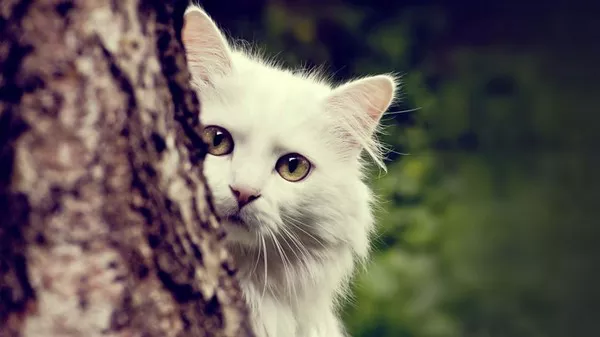Introduction to Calico Cats:
Calico cats are among the most visually striking feline breeds, known for their distinct tri-color coat patterns featuring patches of white, black, and orange or ginger. Beyond their stunning appearance, Calico cats possess unique personalities characterized by intelligence, independence, and occasional feistiness. They are not a specific breed but rather a color pattern found in various breeds, including American Shorthair, Persian, and Japanese Bobtail.
Understanding Cat Nutrition:
Proper nutrition is essential for the overall health and well-being of Calico cats. Like all felines, they require a balanced diet that provides essential nutrients such as protein, fat, carbohydrates, vitamins, and minerals. Quality cat food formulated to meet the nutritional needs of cats at different life stages is crucial for maintaining optimal health, energy levels, and a shiny coat.
Feeding Frequency for Calico Cats:
The frequency of feeding Calico cats depends on factors such as age, weight, and activity level. Kittens require more frequent meals due to their rapid growth and higher energy needs. A general guideline for feeding kittens is to offer small, frequent meals throughout the day, typically three to four times daily. As Calico cats mature into adults, feeding frequency can be reduced to two or three meals per day. However, individual variations may exist, and some cats may prefer smaller, more frequent meals while others may prefer larger meals spaced out throughout the day.
Portion Sizes:
Determining the right portion sizes for Calico cats is crucial to prevent overfeeding, which can lead to obesity and related health problems. Portion sizes should be based on the cat’s age, weight, activity level, and metabolic rate. It’s essential to follow feeding guidelines provided by the cat food manufacturer and adjust portions as needed based on the cat’s individual needs. Monitoring the cat’s body condition score and adjusting portion sizes accordingly can help maintain a healthy weight.
Types of Food:
When it comes to feeding Calico cats, pet owners have several options, including wet food, dry food, or a mixed diet. Each type of food has its advantages and considerations. Wet food is often preferred by cats due to its higher moisture content and palatability, making it an excellent choice for cats with urinary tract issues or those prone to dehydration. Dry food, on the other hand, is convenient and can help maintain dental health by promoting chewing. A mixed diet combining wet and dry food can offer the benefits of both types while satisfying the cat’s preferences.
Feeding Schedule:
Creating a feeding schedule that aligns with a Calico cat‘s natural eating habits is essential for promoting healthy eating behavior and preventing obesity. Cats are natural grazers, preferring to eat multiple small meals throughout the day. Establishing a consistent feeding schedule can help regulate the cat’s appetite and prevent overeating. Offering meals at set times each day and avoiding free feeding can help control portion sizes and promote a healthy weight.
Health Considerations:
Several health issues may affect the feeding frequency and diet of Calico cats. Obesity is a common concern among cats, including Calicos, and can lead to various health problems such as diabetes, arthritis, and heart disease. It’s essential to monitor the cat’s weight regularly and adjust their diet as needed to maintain a healthy body condition. Additionally, Calico cats may be prone to certain genetic conditions, such as feline lower urinary tract disease (FLUTD), which may require dietary modifications to prevent recurrence.
Consulting with a Veterinarian:
Consulting with a veterinarian is paramount to tailor a feeding plan to the individual needs of a Calico cat. A veterinarian can provide guidance on selecting the right type of food, determining portion sizes, and establishing a feeding schedule based on the cat’s age, weight, activity level, and any underlying health conditions. Regular check-ups allow veterinarians to monitor the cat’s health and make necessary adjustments to their diet as they age or if health issues arise.
Monitoring Weight and Adjusting Diet:
Regularly monitoring a Calico cat’s weight is essential for assessing their overall health and adjusting their diet accordingly. Pet owners should aim to maintain their cat at a healthy body condition score, which can be determined by visually assessing the cat’s body shape and feeling their ribs. If the cat is overweight or underweight, adjustments to their diet may be necessary. Gradual changes in portion sizes or switching to a weight management formula can help achieve and maintain a healthy weight.
Conclusion:
In conclusion, proper nutrition plays a vital role in the health and well-being of Calico cats. Understanding their unique dietary needs and feeding them accordingly can help prevent obesity, promote a healthy weight, and reduce the risk of various health problems. By following feeding guidelines, consulting with a veterinarian, and monitoring their weight, pet owners can ensure their Calico cats lead happy, healthy lives. Responsible feeding practices are essential for the long-term health and happiness of these beloved feline companions.
Related Topics:
How Long Is a Calico Cat Pregnant For?
Can Calico Cat Have Short Hair?
Can Calico Cat Be Black?























